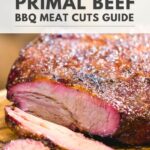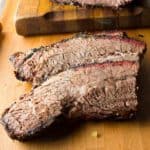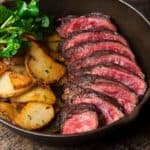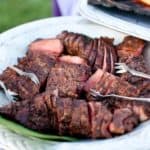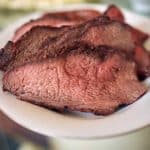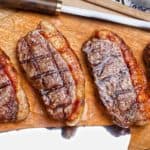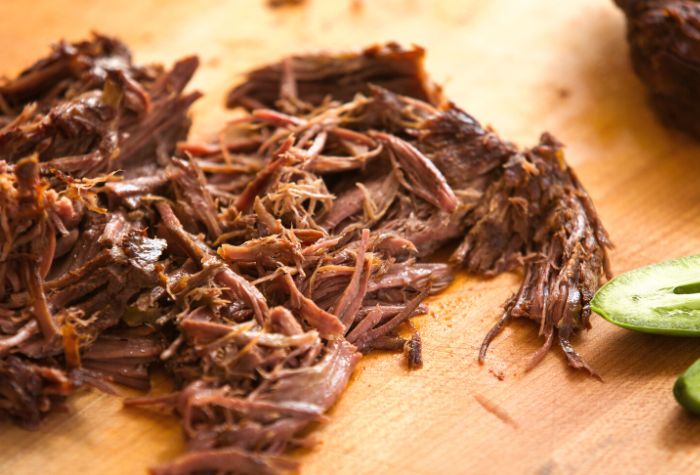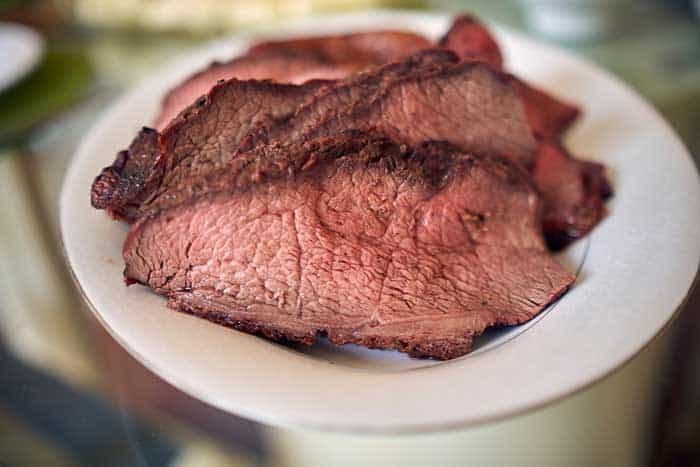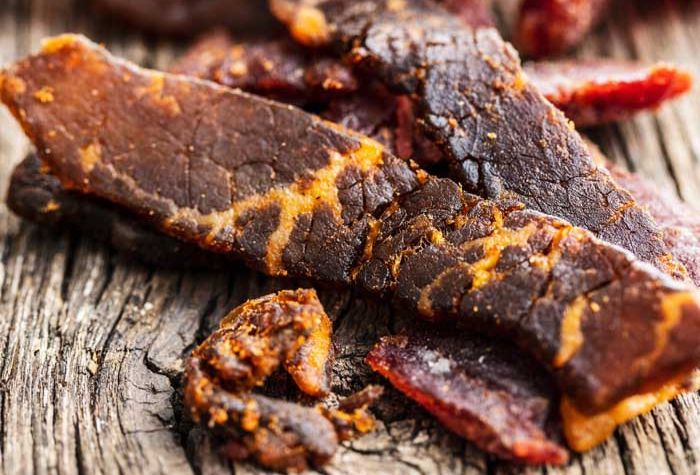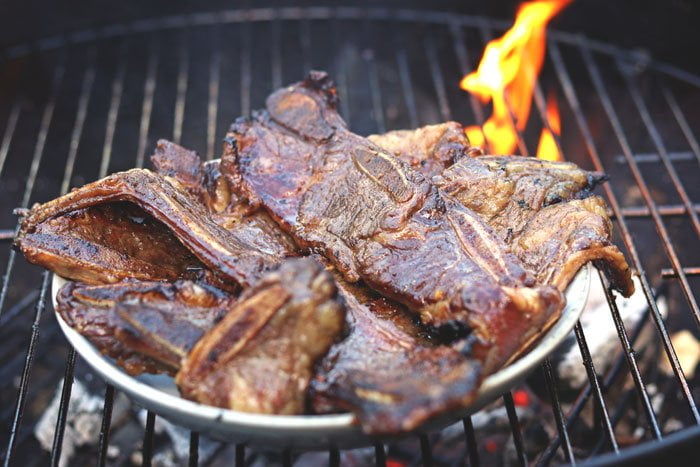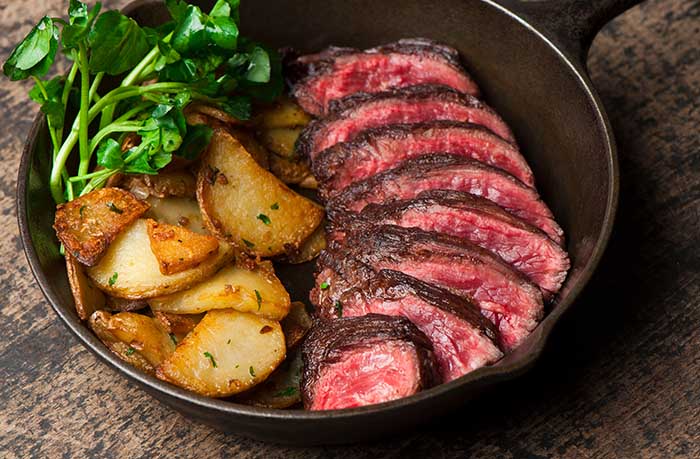Beef primal cuts explained, from meat characteristics to subprimal cuts, and how to cook each portion. Discover everything you need to know about beef today.
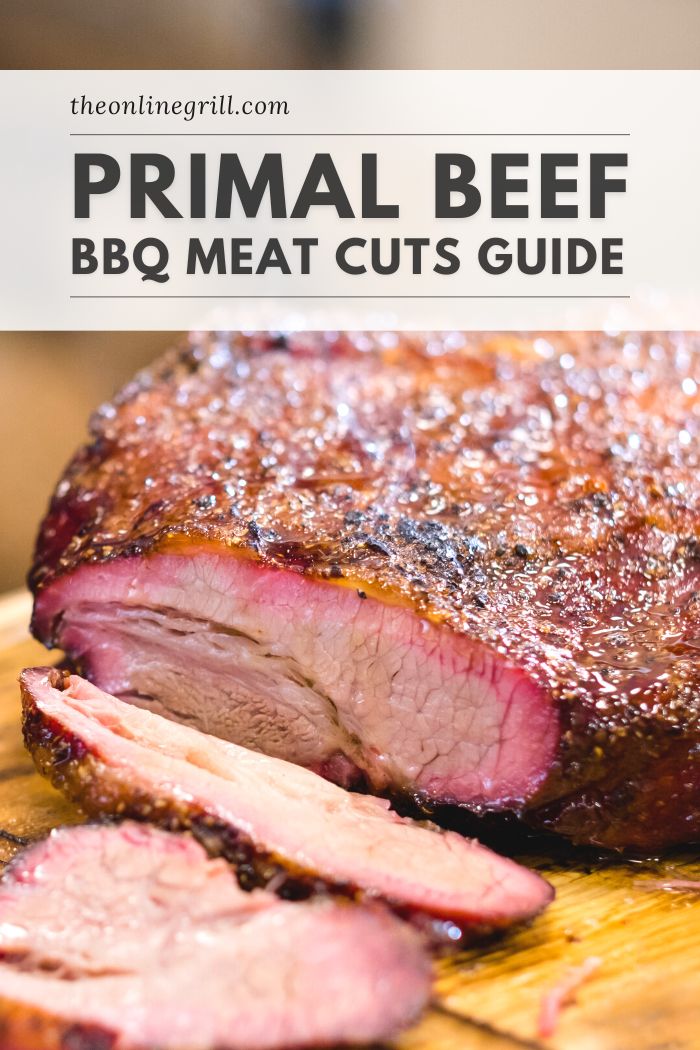
Understanding how to prepare and cook the eight primal cuts of beef properly can go a long way in helping transform your next BBQ or party from ordinary to extraordinary. Every cut of meat is different, and each one needs to be prepared and flavored differently for maximum deliciousness.
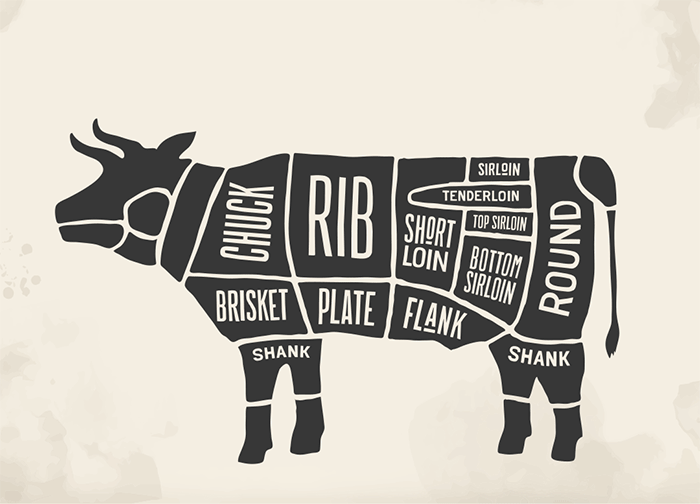
Beef is unlike any other meat and, with over 60 possible cuts to choose from, it can be daunting to know where to start. From brisket to chuck, and loin to shank, there’s a lot to get your head around. Learn your way around a cow with our guide to the eight primal cuts of beef.
Brisket
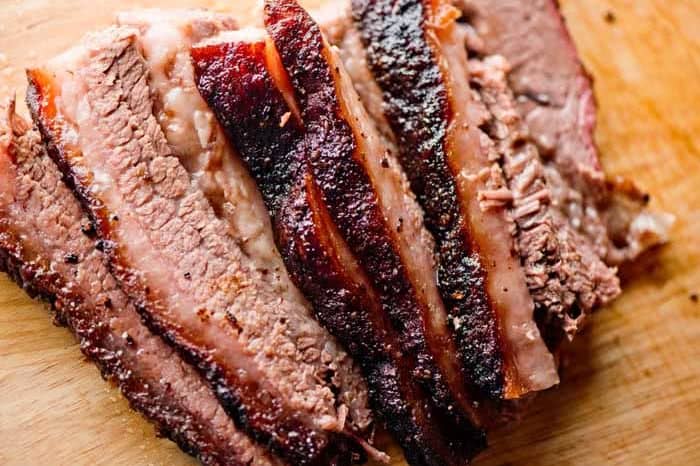
Brisket comes with two subprimal parts: brisket point and brisket plate. Both of these are equally delicious and tender if you cook them properly. The brisket itself is from the chest or breast meat of beef. You can also get brisket from veal, which will be much more tender. It is intensely marbled with fat and contains deep pectoral muscles, which means that cooking it low and slow is the way to go.
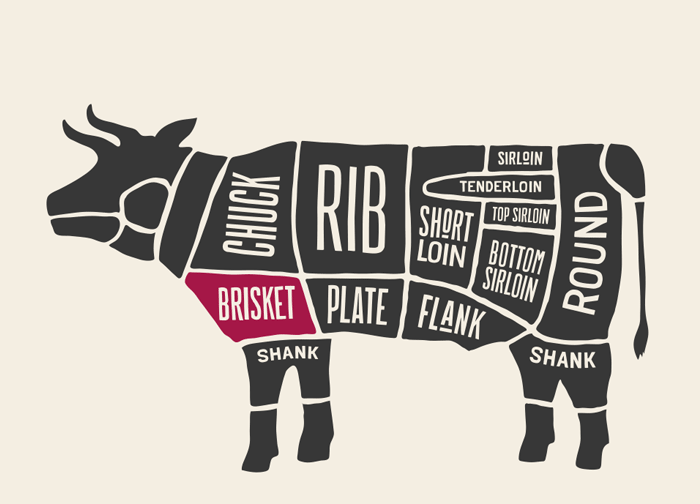
Although you can certainly bake, boil, or roast it, smoking beef brisket gives it the best flavor. You need to cook it thoroughly to break down the meat muscles, and you might be dealing with some connective tissues as well.
Ensure that your butcher does a good job cutting your brisket for you, and you could save some time later on. If you’re cooking it low and slow, you will want to leave the fat cap, preventing the meat from drying out. You can get rid of it when it’s time to eat.
Brisket does well with either a spice rub or a nice marinate, and the best way to BBQ this lovely piece of meat is with wood or charcoal. This creates a smoky atmosphere which infuses the brisket with tons of homey flavor. Use whatever wood chips you want, but most expert grillmasters will add some pecan, mesquite, or hickory chips for maximum flavor.
Once you’ve fully smoked your brisket, you can finish it off by charring the ends, giving it a fantastic flavor profile with a crunchy exterior. This practice is most prevalent in places like Kansas City, so if you’re going for an authentic experience, take a note from the experts.
Brisket contains seven grams of fat, making up ten percent of your daily nutritional value, and 21 grams of protein, totaling 42 percent of your recommended protein intake. For best results, cook your brisket anywhere between five to eight hours in the smoker at 225 degrees until the meat’s internal temperature reaches 202 degrees. Finish it off by charring the ends. Then, let it rest for a few minutes and dig right on in.
Shank
Beef shanks refer to the legs of a cow and can include both the shin and leg meat. Beef shank cuts are very sinewy and can be tough, so it’s essential to cook them tenderly and slow for the absolute best flavor. You should also make sure that the place where you’re cooking your shank is full of moisture so that you can infuse the meat with some water as it cooks.
Although beef shanks aren’t as popular in the United States, they are very common in the United Kingdom. If you want to get some flavor from across the pond on your plate, why not check out this often-overlooked cut of meat? Beef shanks make up nine percent of your daily fat intake and have 34 grams of protein, or 68 percent of your recommended daily intake.
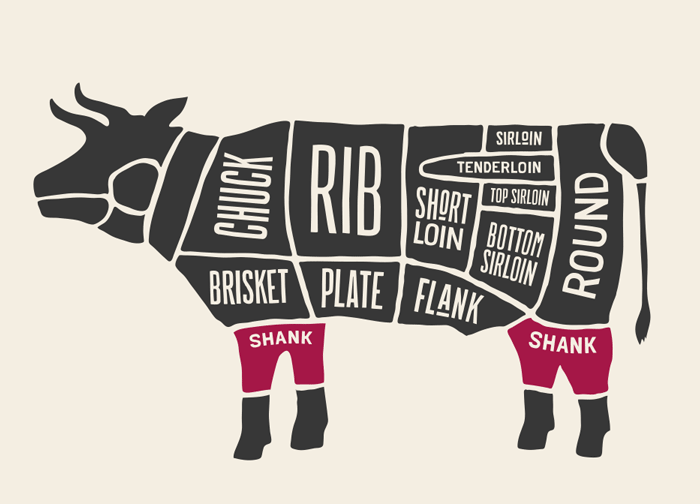
For best results, get your beef shanks into a nice, citrus-based marinade. The citrus will infuse the shanks and even help to break down the meat. You can also use red wine, coffee, or balsamic vinegar. Rest assured, the meat will stand up to those intense flavors. If you’re going for more of a dry rub, you can’t go wrong with garlic or a sprinkle of black pepper.
Beef shanks sing when you get them into a smoker. Set your smoker to 275 degrees, and then pop your seasoned or marinated shanks inside. You will want to cook the meat for at least two and a half hours, checking it regularly for doneness and toughness. This is just the initial stage.
After you’ve smoked your meat for a few hours, put it into a large, grill-friendly pan and add your liquid marinade or more of your rub. Cook it again for about five to six hours. Although this might seem excessive, you need to break down the shanks properly.
Test to see if your meat is ready by pulling at it with two forks. If it pulls apart quickly, it’s ready to eat. If not, you might need to let it cook for a little bit longer if you want a juicy cut of meat.
Ribs
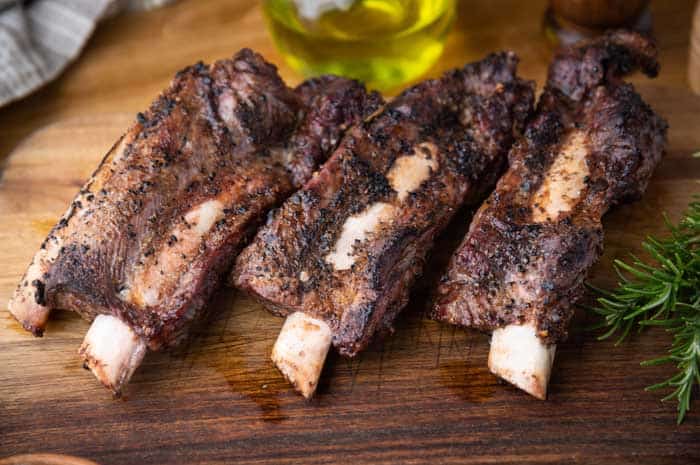
There are two main subprimal parts of ribs: Short ribs and beef back ribs. We’re most familiar with the sub-primal cuts, short-ribs, in the United States. Most types of beef ribs are relatively fatty, with 42 grams of fat per serving, making up 64 percent of your daily intake. They have 22 grams of protein, coming in at 44 percent of your daily intake. If you’re on a diet, you might want to consider opting for another choice!
You can grill beef back ribs right away, but you will want to braise your short ribs before grilling them. It’s possible to braise beef back ribs also, but it’s imperative that you take this extra step with short ribs.
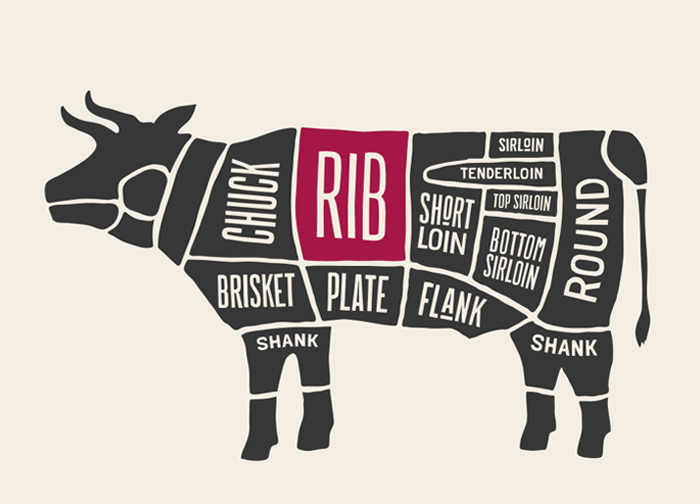
When it comes to ribs, the secret is in the sauce. If you have a great marinade, your ribs will undoubtedly taste amazing. Make sure that you marinate your ribs for a good long time. You want them to soak up as much liquid as possible. We recommend that you marinate your ribs for five hours, but certainly no less than two.
Once your ribs are prepared and ready to hit the grill, it’s time for the magic to start. Cook your ribs at 250 degrees over indirect heat for at least an hour or an hour and a half. You will want to turn your ribs often so that they don’t burn, especially if you’re using a stickier marinade.
You’ll know that they’re done when they’re at least 165 degrees inside. Since ribs can cook unevenly, make sure that you check the internal temperature of at least a few pieces of meat. Always check the temperature at the thickest part of the rib.
Although you should discard the marinade that your ribs were soaking in for sanitary and health reasons, you can always make up a separate batch to enjoy as a glaze for your ribs.
Loin
Beef loin, also called tenderloin, is one of the most prized parts of meat. It comes from the area near the cow’s rump, and it’s prized for its tenderness and subtle marbling. It’s also one of the most expensive cuts of meat and is often referred to as filet mignon and sold for astronomical prices in restaurants all over the world. You can make beef loin at home, and it can be just as delicious!
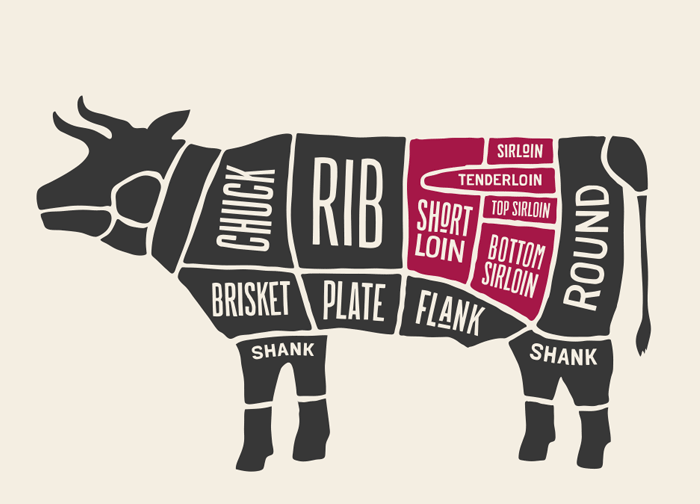
Beef loin has 25 grams of fat, making up 38 percent of your daily recommended intake. It also has 24 grams of protein, for 48 percent of your daily intake. Trust us; it’s worth every last calorie!
Beef tenderloin tends to be a larger cut of meat, but it’s really easy to cook since it’s so tender. Smoked beef tenderloin is expensive but well worth the extra cost. Unlike other cuts of meat on our list, you won’t be left with a chewy or tough product if you don’t cook it for long enough.
The beef loin is intensely flavorful, so you can use just about anything that you have in your cupboards. Even oil, salt, and pepper will yield you an incredible dish. Since you don’t need to cook the toughness out of it, you can have beef loin as rare as you would like. Generally, an internal temperature of 125 is rare, 135 is medium-rare, and 145 is medium.
There shouldn’t be too much fat on your cut of beef loin, and that internal fat is what’s going to give it its silky texture. Still, you will want to trim any outer fat from your cut. Try to remove any silvery bits as well.
You can either chop the beef loin into rounds or BBQ it whole. If you opt to do it whole, it will take between 45 minutes to an hour, and you should let it rest for at least 15 minutes before cutting into it.
If you want to do something really spectacular at your next BBQ, why not invest in one of these premium cuts of meat? You will not regret it!
Round
Round cuts come from the back legs of the cow, but they’re not the same as shanks because they are higher up on the animal. There are a few subprimal cuts of the round, including eye round, bottom round, and top round. All of these different cuts are equally as good and can be BBQ’d in a delicious way.
Round steaks are comparably less fatty than other cuts, with their total fat content making up only seven percent of your daily intake. They are very high in protein, though, topping the charts at 28 grams of protein for 56 percent of your recommended intake. They’re an excellent option for people who are on paleo or keto diets.
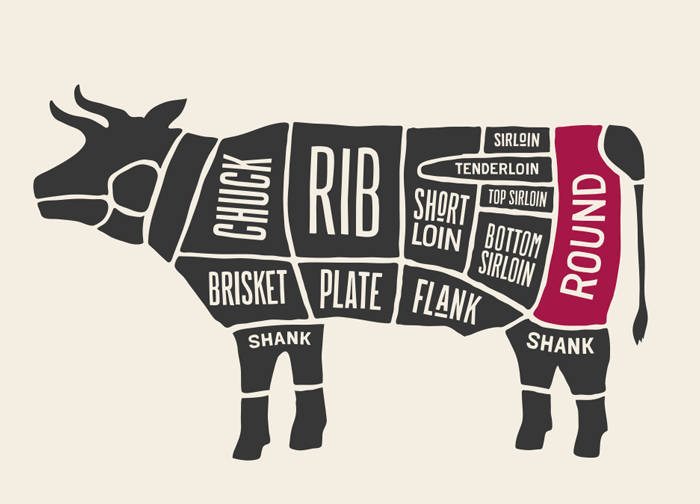
Sometimes, you will get beef round cuts with the bone in. This generally gives the steak itself more flavor. Even if you don’t get the bone in, the meat will still be delicious. Many people cook this cut of meat in a slow-cooker because it can be a little bit difficult to BBQ. However, with the proper tools and seasoning, you can transform this cut of meat into a sumptuous dish that you make on the grill.
The reason it’s challenging to grill is because of its lack of marbling, meaning you will need to tenderize it first. Pound the meat with a mallet to break down some of the tougher sinew and tissues, and then season it liberally with salt, onion, garlic, rosemary, or thyme. The bright herbs will help to infuse the steak with a lot of flavors.
Once you’ve seasoned your steak correctly, let it rest in the refrigerator for two hours. You can even let it sit overnight if you want. The only thing that will happen is that your steak will get even more delicious.
Sear your steaks over an open flame so that they have a nice, crunchy exterior, and then put them on a cooler part of your grill to cook internally. Flip them once. Your internal temperature should be about 200 degrees.
Although the actual cooking time might seem short because round cuts are tougher, a lot of the prep work is done before the steaks even hit the grill. Tenderizing your meat and seasoning it well will work wonders with this cut of meat.
Chuck
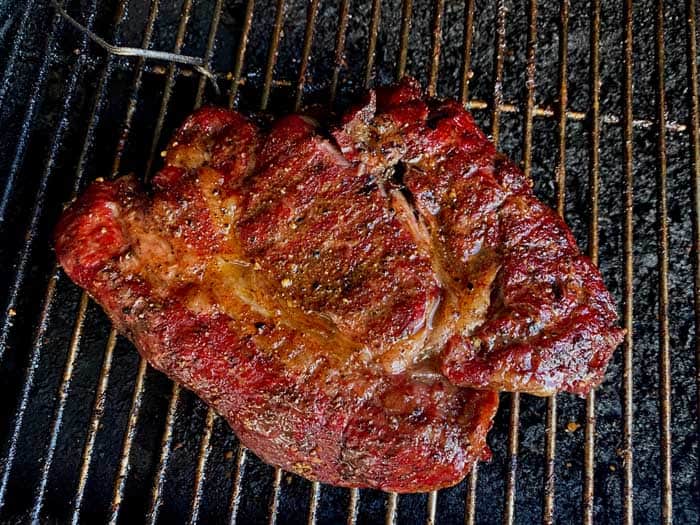
Separated into several different subprimal cuts, beef chuck contains the neck, blade, cross rib, and shoulder. It’s a standard cut of meat that tends to be less expensive than other different cuts and is very commonly cooked as a roast, but you can undoubtedly grill it too. Smoked chuck roast is an excellent option for those times when you have to feed a lot of people because it’s not expensive, and it can be absolutely divine if you prepare it properly.
Chuck tends to be thickly cut, so if you want thinner steaks, you need to consult with your butcher. If you can’t find chuck meat itself, simply look for it under the name “pot roast.” Chuck has 20 grams of fat, making up 30 percent of your average daily recommended fat intake. It’s also got 25 grams of protein for 50 percent of your daily recommended intake.
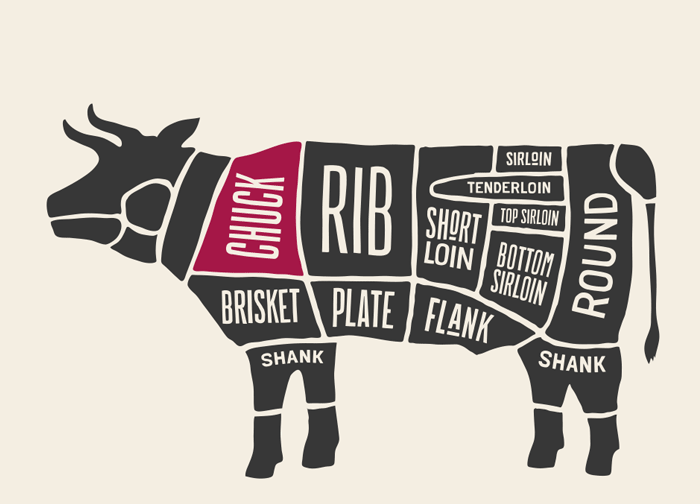
The biggest problems that you will encounter with chuck are the ligaments and tissue. This cut tends to be quite heavy on collagen, so it can be very chewy if you don’t cook it properly. On the other hand, if you do cook it right, the collagen will melt into the meat and give you a beautiful, beefy taste.
If you’re looking for the chuck to BBQ, try to find a piece from the top blade. Although it will have a lot of gristle on it, you simply have to remove the fat, and you will be well on your way.
Chuck does great on a charcoal grill when preheated for five to ten minutes. Before putting the steak on, you will need to whip up a marinade. Think about something that goes well with big, bold flavors. Garlic, red wine, or even mushrooms are great additions to a chuck steak marinade.
When it comes to grilling the meat itself, your grill should be around 300 degrees. The first thing that you should do is sear the meat on a hot part of the grill, then wrap it in foil with the additional marinade, and cook it for about five hours. You want an internal temperature of about 250 degrees. You will know when your chuck is done because you will be able to shred the meat with a fork easily.
Once your steaks are complete, let them rest for 30 minutes, and then enjoy!
Flank
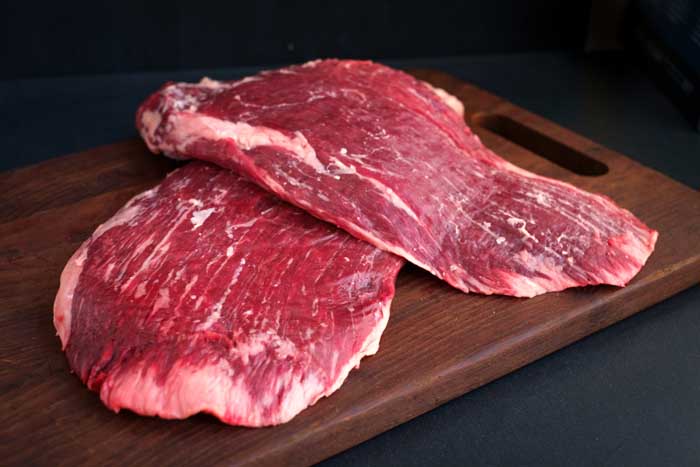
Flank cuts come from the abdominal and chest area of the animal. It can be a little bit tough because a lot of flank steak contains muscular material. It’s a trendy cut of meat in France, Colombia, and Brazil and is great for grilling because it comes in a large, flat piece. If you’ve ever had London broil or Brazilian barbecue, there’s a very good chance that you’ve had flank steak. It’s also a popular addition to fajitas.
The trick to properly preparing this cut of meat is to cut against the grain. This helps to tenderize it and break down any muscular tissue. Flank steak is terrific when it’s thinly sliced and has a spicy marinade. This great cut of meat is very low in fat, containing only eight grams per serving for 12 percent of your recommended daily intake. It’s got 28 grams of protein, though, making it a very good option for people who are watching their waistlines.
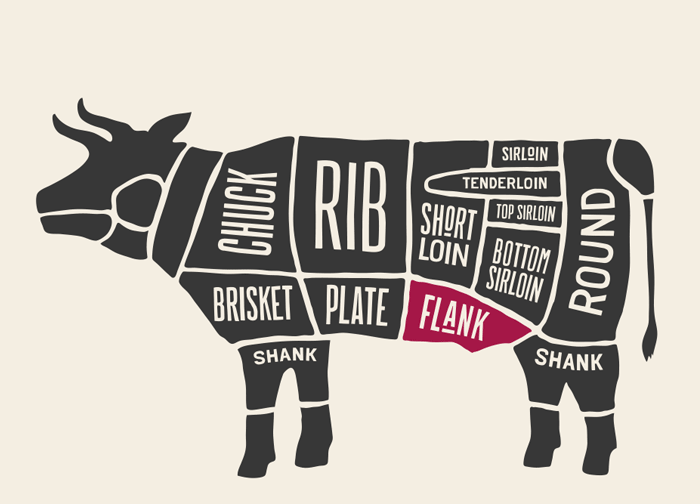
One of our favorite ways to prepare this beef cut is by reverse searing flank steak. Slow smoked in your grill before finishing with a beautiful char, we’re confident that it’ll soon be your new favorite way of cooking it too.
If you want to make your flank steak sing, give it a big boost with a homemade teriyaki sauce. You can whip this up yourself with soy sauce, brown sugar, garlic, and just a hint of chili. You can also use a store-made variety.
Other excellent marinades include chilis and citrus juice, Worcester sauce, or even bottled Italian dressing. Marinade your meat for at least three hours, but realistically you can marinate it for as long as you’d like.
If your flank steak is thin and the marinade has had a chance to do its job of breaking down any additional tough parts, the rest is easy. You don’t need to cook this delicious steak for very long. Turn your grill on high, but make sure that there’s a place where you can rest the steak on indirect heat as well.
Sear the outside of your steak for two minutes on each side. Don’t wiggle it around or move it too much. You want to get a nice, crispy crust on your steak. Once it’s thoroughly seared, you can move it to the other side to finish cooking. Your steak needs an internal temperature of 125 for rare, 140 for medium-rare, and 145 for medium. Any more than that and your steak will be well done.
Once you’ve finished, you need to rest your steak for at least 20 minutes. This will give it a chance to perfect itself by letting the juices settle. Then, cut against the grain and serve it up!
Plate
The short plate is really a blanket term that’s very commonly used in the United States to refer to a front cut from the cow’s belly. It’s technically a section of the brisket, but it tends to be on the fattier side and is a lot less expensive.
The short plate comprises hanger steak, skirt steak, and short ribs. It’s also the section of cow where most ground beef comes from. The short plate is tough and fatty, but you can make the most out of it if you know how to cook it properly.
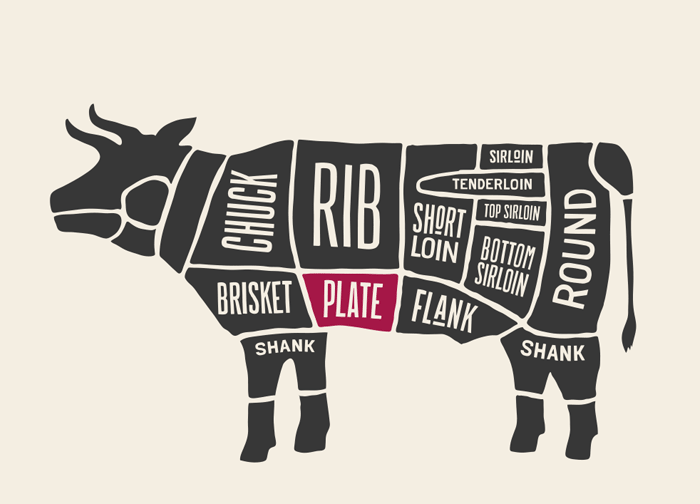
Some people prefer to smoke or cure this meat, and it does very well when standing up to a strong marinade. You have to work with it to ensure that it’s as tender as possible. If you want a particular type of steak, talk to your butcher and let them know which section of the short plate that you would prefer.
This cut tends to be fattier, with 20 grams of fat per serving. That’s 30 percent of your daily recommended intake. It’s also got 27 grams of protein, for 54 percent of your daily value.
If you’re going to eat any part of the short plate, you should try skirt steak. Skirt steak does well with both a dry rub and a marinade and cooks very quickly on the grill. If you can select your cut of meat, try to get one from the outside of the area because that tends to be a little softer and flavorful.
Skirt steak sucks in marinade quickly, so you really need to only leave it on for between 30 to 45 minutes. Once you’ve prepared your steak, fire up the grill and cook it for between three to five minutes on each side.
You can make your skirt steak even more tender by prepping it with a mallet before grilling it. Of course, a thinner steak will cook a lot more rapidly, so make sure that you have a thermometer on hand.
With these tips and tricks, anyone can become a master grill champion. Next time that you are in the market for some meat, consider getting a different cut. You might find a new favorite dish!
